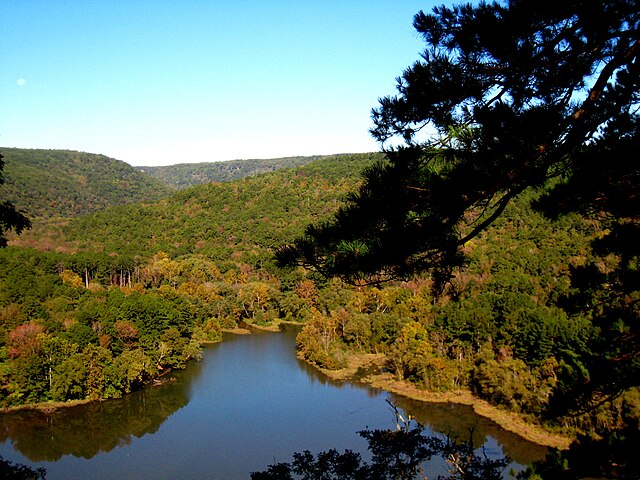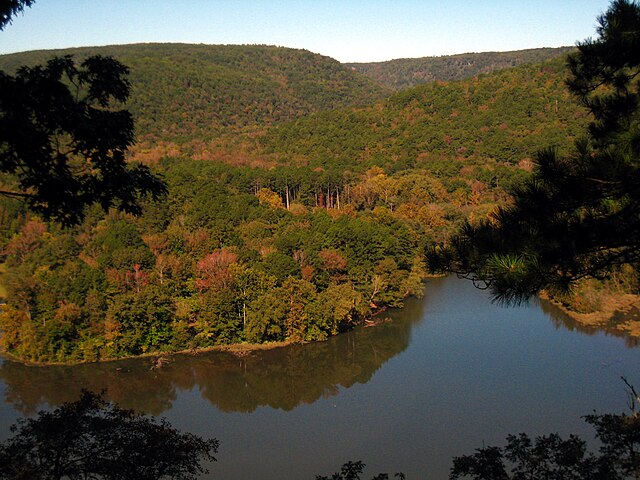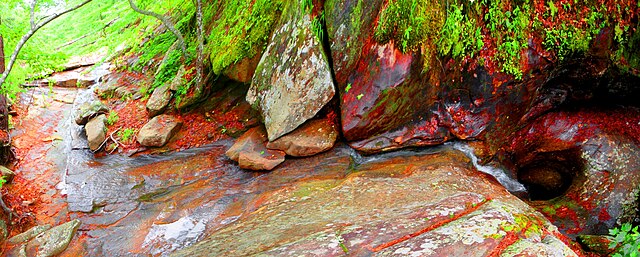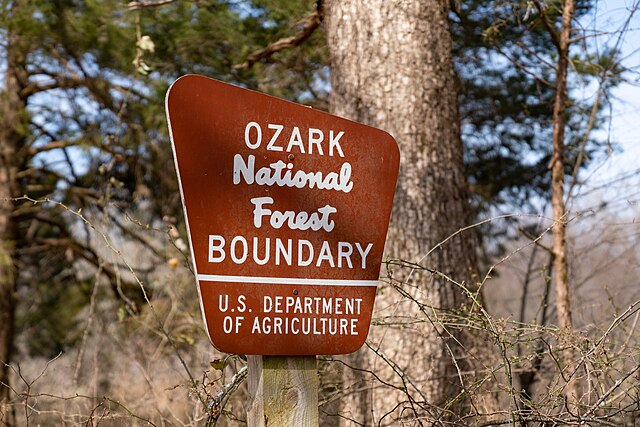Have you ever wondered what it feels like to step into a living postcard? Welcome to Ozark National Forest, where Mother Nature has painted her masterpiece across 1.2 million acres of pristine Arkansas wilderness. This isn’t just another forest – it’s a playground for adventurers, a sanctuary for wildlife, and a canvas of breathtaking beauty that changes with every season.
Nestled in the heart of Arkansas, Ozark National Forest offers an escape from the digital noise of modern life. Whether you’re a seasoned hiker seeking your next challenge or a family looking for the perfect weekend getaway, this natural wonderland has something extraordinary waiting for you.
What Makes Ozark National Forest Special?
Think of Ozark National Forest as Arkansas’s best-kept secret – except it’s hiding in plain sight! This massive wilderness area stands out from other national forests due to its unique blend of rugged mountains, pristine rivers, and diverse ecosystems that create a truly magical experience.
Location and Size
Sprawling across north-central and northwestern Arkansas, Ozark National Forest covers an impressive 1.2 million acres. That’s roughly the size of Delaware! The forest stretches across multiple counties, creating a vast network of interconnected wilderness areas that feel endless when you’re exploring them.
The forest is conveniently located within driving distance of major Arkansas cities like Little Rock, Fayetteville, and Fort Smith. This accessibility makes it perfect for both day trips and extended wilderness adventures.
Unique Geological Features
What sets Ozark National Forest apart is its fascinating geological story. The region sits atop ancient limestone formations that have been carved and sculpted over millions of years. This geological foundation has created:
- Dramatic bluffs and cliffs that tower above pristine rivers
- Hidden caves and caverns waiting to be explored
- Natural springs that feed crystal-clear streams
- Unique rock formations that challenge climbers and inspire photographers
The Ozark Mountains themselves are among the oldest mountain ranges in North America, giving the landscape a timeless, ancient feel that’s both humbling and inspiring.
Best Time to Visit Ozark National Forest

Choosing when to visit Ozark National Forest is like picking your favorite flavor of ice cream – there’s no wrong answer! Each season brings its own magic, transforming the landscape into a completely different experience.
Spring Adventures (March-May)
Spring in the Ozarks is nothing short of spectacular. As winter’s grip loosens, the forest awakens in an explosion of color and life. This is when you’ll witness:
- Wildflowers carpeting the forest floor in vibrant colors
- Waterfalls at their most powerful, fed by spring rains and snowmelt
- Perfect hiking weather with comfortable temperatures
- Wildlife emerging from winter hideaways, making it ideal for animal watching
The downside? Spring can be unpredictable, with occasional late-season storms and muddy trails. But for those willing to embrace nature’s moods, spring offers some of the most rewarding experiences.
Summer Activities (June-August)
Summer transforms Ozark National Forest into an outdoor enthusiast’s paradise. The dense canopy provides natural air conditioning, making even hot days comfortable under the trees. Summer highlights include:
- Perfect conditions for camping and extended backpacking trips
- Swimming opportunities in clear mountain streams
- Long daylight hours for maximum exploration time
- Prime time for rock climbing and rappelling adventures
While summer brings crowds to popular areas, the forest’s vast size means you can always find solitude if you’re willing to venture off the beaten path.
Fall Foliage Season (September-November)
If you’ve never experienced fall in the Ozarks, you’re missing one of nature’s greatest shows. The hardwood forests explode in a symphony of reds, oranges, and yellows that rivals any New England display. Fall offers:
- Spectacular photography opportunities at every turn
- Comfortable hiking temperatures without summer’s humidity
- Crisp, clear air that makes distant views incredibly sharp
- Fewer crowds than summer, but more than winter
Peak foliage typically occurs in mid to late October, but the exact timing varies with elevation and weather patterns.
Winter Exploration (December-February)
Don’t write off winter in Ozark National Forest! While it’s the quietest season, it offers unique experiences for hardy adventurers:
- Solitude that’s impossible to find during other seasons
- Stunning ice formations on waterfalls and cliff faces
- Crystal-clear views through leafless trees
- Opportunities for winter photography and peaceful contemplation
Winter hiking requires proper preparation and gear, but the rewards are immense for those who embrace the challenge.
Top 10 Must-Do Activities in Ozark National Forest

Ready to dive into adventure? Ozark National Forest offers countless ways to connect with nature, challenge yourself, and create unforgettable memories. Here are the experiences you absolutely cannot miss:
Hiking the Buffalo National River Trail
The Buffalo National River Trail is like the crown jewel of Ozark hiking experiences. This trail system offers everything from easy riverside walks to challenging multi-day backpacking adventures. What makes it special?
- Over 150 miles of maintained trails following the pristine Buffalo River
- Opportunities to see elk, black bears, and countless bird species
- Multiple access points allowing for customized trip lengths
- Stunning bluffs and clear spring-fed waters throughout the journey
Pro tip: Start with a day hike near Ponca or Jasper to get a taste of what the Buffalo has to offer before committing to longer adventures.
Rock Climbing at Sam’s Throne
Are you ready to test your limits against ancient sandstone? Sam’s Throne is a world-class climbing destination that attracts adventurers from across the globe. This dramatic cliff formation offers:
- Routes for every skill level, from beginner-friendly to expert-only
- Breathtaking 360-degree views from the top
- Year-round climbing opportunities (weather permitting)
- A chance to climb on rock that’s millions of years old
Even if you’re not a climber, the hike to Sam’s Throne is worth it for the views alone. The overlook provides one of the most spectacular vistas in the entire forest.
Camping Under the Stars
There’s something magical about sleeping under the Ozark sky, where light pollution is minimal and the Milky Way stretches across the darkness like a cosmic highway. The forest offers two distinct camping experiences:
Primitive Camping Options
For those seeking true wilderness immersion, primitive camping allows you to:
- Camp virtually anywhere in the forest (following Leave No Trace principles)
- Experience complete solitude and silence
- Challenge your outdoor skills and self-reliance
- Connect with nature on the deepest level possible
Remember, primitive camping requires advance planning, proper gear, and knowledge of wilderness safety principles.
Developed Campgrounds
If you prefer amenities while still enjoying nature, the forest’s developed campgrounds offer:
- Clean restroom facilities and potable water
- Fire rings and picnic tables at each site
- Easy access to major trails and attractions
- A perfect introduction to forest camping for families
Popular developed campgrounds include Ozark, Mulberry River, and Blanchard Springs, each offering unique advantages and nearby attractions.
Wildlife Watching Opportunities
Ozark National Forest is like a living zoo where animals roam free in their natural habitat. The diverse ecosystems support an incredible variety of wildlife, making every trip a potential wildlife adventure.
Native Species to Spot
The forest’s biodiversity is truly remarkable. Keep your eyes peeled for these amazing creatures:
Large Mammals:
- Black bears (the forest’s most famous residents)
- White-tailed deer grazing in meadows and clearings
- Elk (reintroduced and thriving in certain areas)
- Wild turkey strutting through the underbrush
Smaller Wildlife:
- Gray and fox squirrels chattering in the treetops
- Raccoons exploring campsites at night
- Opossums, the forest’s only native marsupial
- Various bat species emerging at dusk
Bird Life:
- Pileated woodpeckers drumming on dead trees
- Wild turkey calls echoing through valleys
- Hawks soaring above the canopy
- Colorful songbirds during migration seasons
Best Wildlife Viewing Locations
Success in wildlife watching often comes down to being in the right place at the right time. These locations offer your best chances:
- Buffalo Point area: Known for elk sightings, especially during early morning hours
- Blanchard Springs: Attracts diverse wildlife to its water sources
- Mulberry River corridor: Excellent for spotting deer and wild turkey
- Remote trail intersections: Often serve as wildlife highways through the forest
Remember, wildlife viewing requires patience, quiet observation, and respect for the animals’ space. Never approach or feed wild animals – observe from a safe distance and let them remain wild.
Planning Your Ozark National Forest Adventure
Every great adventure starts with solid planning. Whether you’re planning a day trip or a week-long expedition, these practical considerations will help ensure your Ozark experience is everything you hope for.
Getting There: Transportation Options
Ozark National Forest’s size means multiple entry points and access strategies:
By Car: The most flexible option, allowing you to explore different areas and carry all your gear. Major highways like I-40, US-65, and US-7 provide easy access to various forest entrances.
Flying In: Little Rock and Northwest Arkansas regional airports serve the area. Rental cars are essential from either airport, as public transportation to the forest is limited.
Planning Your Route: Consider which areas you want to explore and plan your accommodations accordingly. The forest is too large to see everything in one trip!
Where to Stay Near the Forest
Your accommodation choice can significantly impact your forest experience:
Inside the Forest:
- Developed campgrounds for the full outdoor experience
- Primitive camping for ultimate wilderness immersion
- Cabin rentals in certain areas (limited availability)
Gateway Communities: Towns like Jasper, Harrison, Clarksville, and Ozark offer:
- Hotels and bed & breakfasts for comfort after long days outdoors
- Restaurants featuring local cuisine
- Outfitters and gear shops for last-minute needs
- Local knowledge and recommendations from friendly residents
Essential Gear and Supplies
Proper preparation can make or break your forest adventure. Essential items include:
Navigation and Safety:
- Detailed forest maps and compass (GPS can be unreliable)
- First aid kit tailored to your planned activities
- Emergency whistle and signaling devices
- Weather radio for updated forecasts
Clothing and Protection:
- Layered clothing for changing conditions
- Sturdy hiking boots broken in before your trip
- Rain gear (weather can change quickly in the mountains)
- Sun protection including hat and sunscreen
Camping and Cooking:
- Quality tent suitable for your planned conditions
- Sleeping bag rated for expected temperatures
- Portable cooking equipment and food storage
- Water purification tablets or filter system
Hidden Gems and Secret Spots

While popular destinations have their charm, Ozark National Forest’s true magic often lies in its lesser-known treasures. These hidden gems offer solitude and wonder for those willing to venture off the beaten path.
Waterfall Discoveries
The forest hides dozens of waterfalls, from thundering cascades to delicate ribbon falls. Some favorites include:
- Falling Water Falls: A stunning 60-foot waterfall accessible via a moderate hike
- Twin Falls: Two parallel waterfalls that create a natural amphitheater
- Glory Hole Falls: Features a unique rock formation that frames the falling water
- Buckeye Falls: A series of cascades perfect for photography
Each waterfall offers unique characteristics and requires different levels of hiking commitment. Spring provides the most dramatic flows, while summer offers swimming opportunities below some falls.
Scenic Overlooks
The forest’s elevation changes create numerous opportunities for breathtaking views:
- Hawksbill Crag (Whitaker Point): Perhaps the most photographed spot in Arkansas
- Sam’s Throne: Offers 360-degree views of the surrounding wilderness
- Mount Magazine: The highest point in Arkansas with stunning vistas
- Cedar Falls overlook: Combines waterfall views with forest panoramas
These overlooks provide perfect spots for sunrise or sunset photography, peaceful contemplation, or simply appreciating the forest’s vast beauty.
Safety Tips for Forest Exploration
Adventure and safety aren’t mutually exclusive – they’re essential partners in creating positive outdoor experiences. Ozark National Forest’s wilderness character means taking responsibility for your own safety.
Weather Awareness: Mountain weather can change rapidly. Always check forecasts and be prepared for sudden storms, temperature drops, or fog that can reduce visibility to near zero.
Wildlife Encounters: While animal attacks are extremely rare, knowing how to react is crucial:
- Make noise while hiking to avoid surprising animals
- Store food properly to avoid attracting bears to campsites
- Never feed or approach wild animals
- If you encounter a bear, don’t run – make yourself appear large and back away slowly
Navigation Safety: GPS devices can fail or lose signal in dense forest. Always carry:
- Physical maps of your planned route
- Compass and knowledge of how to use it
- Extra batteries for electronic devices
- Planned turnaround times to avoid being caught in darkness
Water and Hydration: Natural water sources may look pristine but can contain harmful bacteria. Always purify water from streams, springs, or lakes before drinking.
Conclusion
Ozark National Forest isn’t just a destination – it’s a journey into the heart of Arkansas’s wild soul. From the ancient limestone bluffs that tell stories spanning millions of years to the pristine rivers that reflect towering trees, this forest offers experiences that stay with you long after you’ve returned home.
Whether you’re seeking adrenaline-pumping adventures like rock climbing at Sam’s Throne, peaceful moments watching wildlife along the Buffalo River, or simply the therapeutic rhythm of hiking boots on forest trails, Ozark National Forest delivers. It’s a place where time slows down, where the modern world’s constant buzz fades to the gentle whisper of wind through leaves.
The forest’s 1.2 million acres ensure that even after multiple visits, new discoveries await around every bend in the trail. Each season paints the landscape with different colors and moods, creating a destination worth visiting again and again. From spring’s wildflower displays to fall’s spectacular foliage show, from summer’s perfect camping weather to winter’s crystalline beauty, Ozark National Forest offers year-round adventure opportunities.
Remember, this wilderness belongs to all of us – treat it with respect, follow Leave No Trace principles, and help preserve its beauty for future generations. The forest’s magic lies not just in its natural wonders, but in our responsibility to protect and cherish these wild places.
So pack your sense of adventure, leave your worries behind, and prepare to discover why Ozark National Forest is truly Arkansas’s hidden wilderness paradise.
Frequently Asked Questions
Q: Do I need permits to camp in Ozark National Forest?
A: Permits are not required for primitive camping in most areas of the forest. However, developed campgrounds require reservations during peak seasons. Some special use areas may have restrictions, so check current regulations before your trip.
Q: Are pets allowed in Ozark National Forest?
A: Yes, pets are welcome in most areas of the forest but must be kept on leashes no longer than 6 feet. Pet owners are responsible for cleaning up after their animals and ensuring they don’t disturb wildlife or other visitors.
Q: What’s the best trail for beginners in Ozark National Forest?
A: The Blanchard Springs Recreation Area offers several beginner-friendly trails, including the Trail Through Time, which is a 1.5-mile interpreted trail perfect for families. The area also features beautiful springs and developed facilities.
Q: Is rock climbing allowed throughout the forest?
A: Rock climbing is permitted in most areas, but some locations may have seasonal restrictions to protect nesting raptors. Popular climbing areas like Sam’s Throne and Moore’s Wall are open year-round. Always check local regulations and climb responsibly.
Q: How crowded does Ozark National Forest get during peak seasons?
A: Popular areas can get busy during peak fall foliage season and summer weekends, but the forest’s vast size means solitude is always available for those willing to hike a bit further. Weekdays and less-known areas offer the best chances for peaceful experiences.

